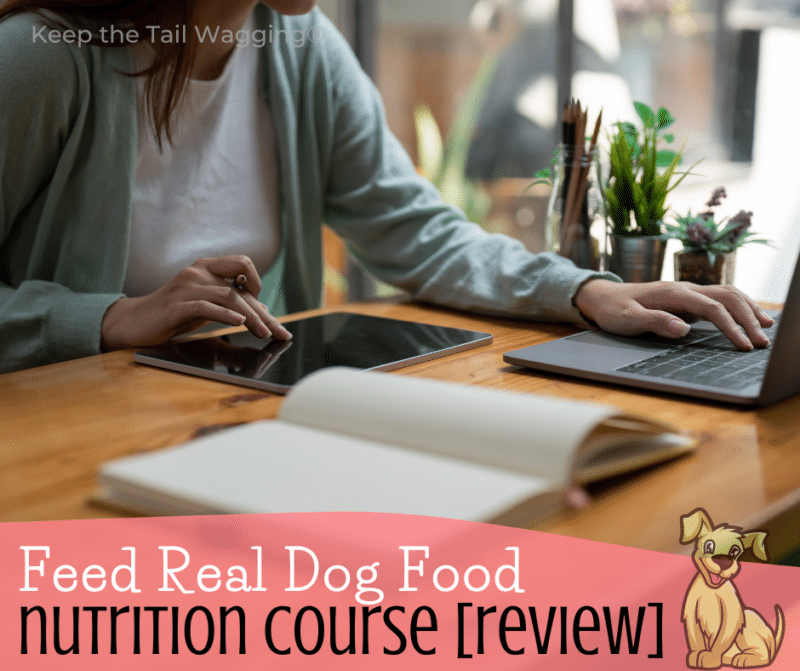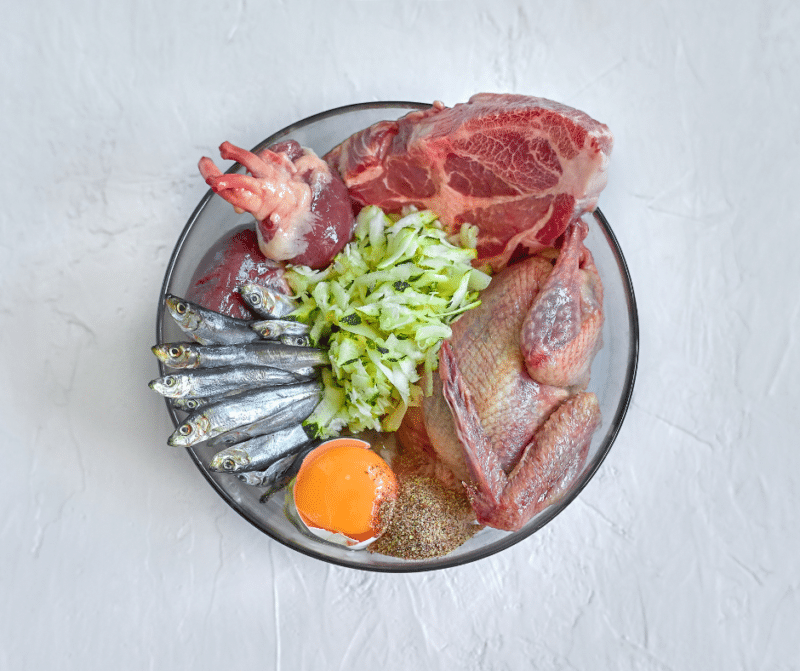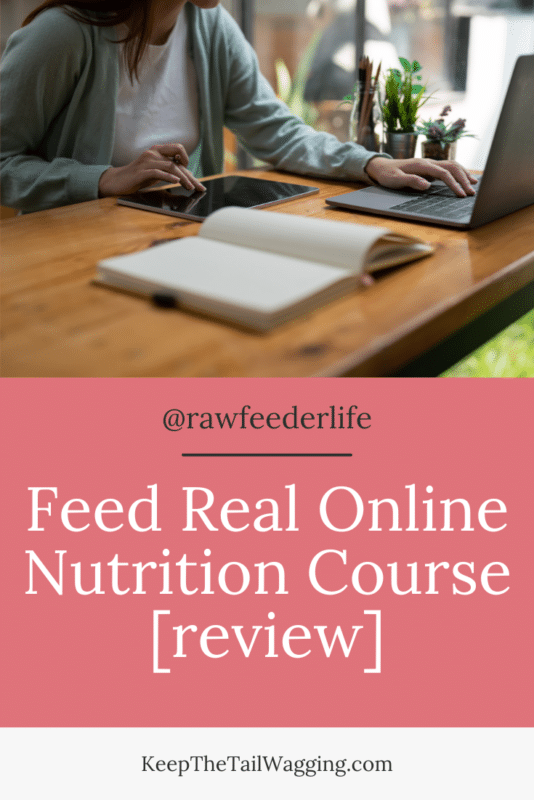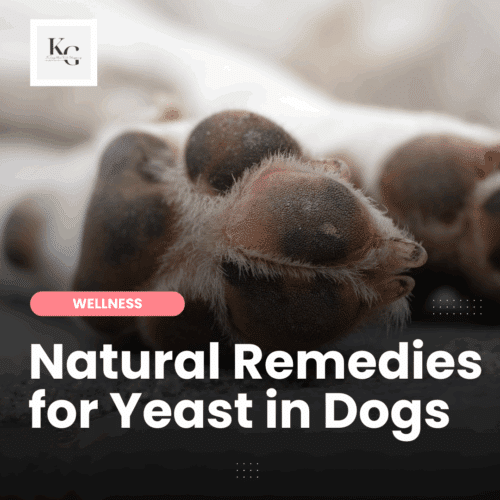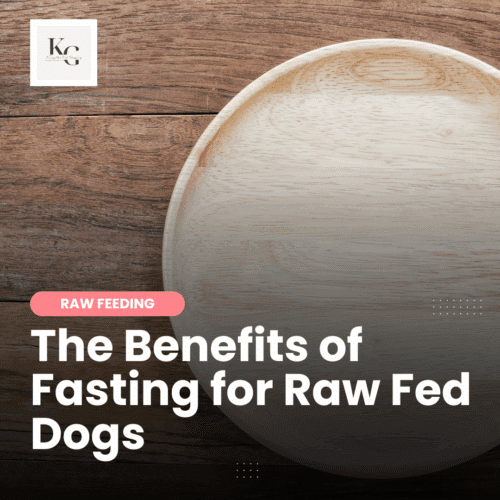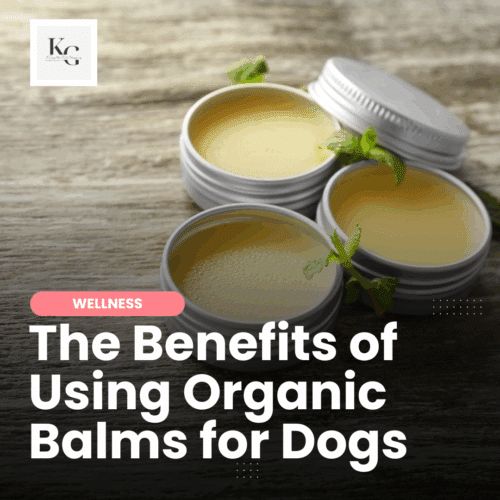Keep the Tail Wagging is supported by pet parents. I occasionally earn a commission (at no additional cost to you) when you click through an affiliate link to one of my favorite products. Thank you for your support. Read More
When I began my raw feeding journey, it never occurred to me to find a course to take to help better understand feeding fresh food to my dogs. I joined several Facebook raw feeding groups and learned the following:
- Feed 80% muscle meat, 10% bone, 5% liver, and 5% secreting organs. This was considered balanced by many raw feeders in 2013. I start my meal prep with 80/10/10, adding boiled oysters and a base mix.
- While some felt vegetables were unnecessary because it was believed that dogs didn't contain the digestive enzymes (amylase) to absorb the nutrients, others fed them as a source of fiber and antioxidants.
At first, this sounded doable, but then I had questions, and that's when a raw feeding course would have been beneficial. Today, many courses are available for pet parents who want to learn more about what to feed their dogs and why and the Feed Real Dog Food Nutrition course is one of the best.
What the Real Dog Food Nutrition Course Covers
I wasn't sure what to expect from the course. I wondered if it would resemble the Dogs Naturally Magazine Pet Food Nutrition course. Would it be biased or judgmental? After nearly ten years of raw feeding, would I learn anything from this course? I'll cover all of this and more in this review.
But first, here are the topics the course covers…
- Basics of dog anatomy and the physiology of the gut microbiome
- Essential vitamins and minerals for healthy dogs
- The components of fresh food (protein, calcium, fats, fiber, liver/other secreting organs)
- What AAFCO & NRC standards are, and what this means when feeding a raw diet
- How to balance fats (omega-3s/6s)
- How to put your bowl together
- Supplements & Alternatives
- How to combat concerns about bacteria, aggression, and imbalances
- Tips and tricks to confidently transition to fresh food
Kay Stewart, Registered Veterinary Technician and Researcher/Writer for Real Dog, Inc, did a fantastic job writing this course and creating content for the Feed Real Movement platform.
Feed Real vs. Dogs Naturally Magazine
There is no comparison. The Dogs Naturally Magazine course gave me an overview of the pet industry, commercial pet food, ingredients, and reading pet food labels. When I finished that course, I could walk into a pet store and tell you which foods I felt comfortable feeding my pets and why. The DNM course reminded me why transitioning my dogs to raw was a good idea.
Dogs Naturally Magazine offers a course on raw feeding, but I chose not to take it.
The Feed Real course provides a deep dive into dog nutrition, the main difference between this and the DNM course. When I finished the Feed Real course, I better understood…
- the role of AAFCO and the NRC in dog nutrition and the pet food industry
- why it's essential to feed a nutritionally complete diet
- the role of vitamins and minerals in my dogs' diet
- why synthetic vitamins should be avoided (or fed in moderation)
I don't feel equipped to offer nutrition consultations, but I ask more thoughtful questions and make better choices for my dogs.
Feed Real Dog Food Nutrition Course isn't Judgmental
Many courses, conferences, and online webinars are for raw feeders and people who feed fresh food (freeze-dried, dehydrated, cooked). Rarely do content creators in the Fresh Food space speak positively about kibble, and some messages come across as kibble-shaming.
The Feed Real Dog Nutrition Course focuses on dogs, not shaming pet parents. The first portion of the course offers suggestions on incorporating what is being taught into a kibble diet. This course is for anyone wanting to learn more about dog nutrition and does a great job of meeting people where they are rather than scaring them into ditching the kibble.
Don't get me wrong; fresh food is far superior to dry dog food. But not everyone can feed a fresh food diet to their dogs. And this course acknowledges this fact.
Is This Course for Experienced Raw Feeders?
Absolutely!
Kay Stewart took her experience and knowledge and put it to good work and now creates detailed and easy to consume content for Real Dog, Inc, and this course.
Each module is a fascinating read, followed by a quiz, and the course ends with a final exam. Each section had a list of articles and studies to support what was taught. I was stunned by how much I learned in this course.
Unit 1 – the history of dogs – this section covers the history of dogs and how dogs became our companions. Did you know the canine pancreas began producing amylase in response to humans settling down and growing crops?
Unit 2 – essential nutrients – this section dives into the macronutrients, micronutrients, vitamins, and minerals essential for our dogs, breaking down proteins, fat, carbs, seafood, bones, and more.
Unit 3 – feeding standards – this section covers AAFCO and NRC guidelines and how to feed our dogs. I've always questioned why people follow the guidelines, and I now understand their roles better. Did you know that senior dogs need MORE protein in their diet, not less?
Unit 4 – raw feeding basics – this section explains why fresh food is better than dry dog food and covers the various raw feeding models. I had no idea there was an Ancestral raw feeding mode, which isn't the same as the Prey Model.
Unit 5 – transitioning to raw – this is the section I needed when I started feeding raw as it helps pet parents transition to raw and troubleshoots issues we may have with the transition.
Unit 6 – after the transition – this section explains the signs of nutrient deficiencies and toxicities. And it covers how common medications interact with nutrient levels in a dog's diet.
Unit 7 – myth-busting – the final section covers common myths and misconceptions pet parents have about feeding a raw food diet.
Is the Feed Real Dog Nutrition Course Worth it?
Absolutely!
The Feed Real Dog Nutrition Course is $150 and covers more information in greater detail than any other course at this price point. If you're not interested in offering nutrition consultations and are on a budget, this is an excellent investment in yourself and your dogs.
Pet parents with a Feed Real membership have access to all the information learned through a database with more than 100 research-based articles on dog nutrition.
After finishing the course, I made the following changes to my dogs' diet:
- I switched from Dr. Harvey's Paradigm to Dr. Harvey's Raw Vibrance because the latter doesn't have synthetic vitamins. I still feed Paradigm, but not as often as before taking this course.
- I became more confident in my choice to focus on my dogs' gut health, allowing me to reduce the number of supplements I add to my dogs' diet.
- I began adding feeding more protein to my senior dogs. I order a case of a supplemental raw food blend that is great for growing puppies and seniors, which I feed as a side dish.
- A certified canine nutritionist reviewed my DIY recipes to ensure I covered all the bases. And, when choosing a commercial raw for my puppy, I knew to ask each brand if their food was formulated for all life stages.
- I now crush hemp seeds before adding them to my dogs' diet for better nutrient absorption.
Some of these things may be obvious to some pet parents, but they weren't to me. That was what I found most valuable about this course – the little things I didn't know and didn't know to inquire about were covered in great detail.
Final Thoughts on the Feed Real Course
After a decade of feeding raw, I believe fresh food is the best for dogs. I've also learned that it's important to get it right. If you'd like to learn why we should feed fresh food, how to feed a raw food diet, and make sure that you're accurately meeting your dog's nutritional needs, then this course is for you for the following reasons:
- The course is affordable at $15o (at the time of this review), significantly less than a similar course in quality and information.
- Someone with extensive experience and knowledge in animal nutrition and research wrote this course.
- You will walk away from this course more confident in what you're doing and why, allowing you to engage in intelligent and respectful conversations about your dog's diet and nutrition.
And as long as you're a member of the Feed Real Movement, you'll have access to a growing database of information that allows you to revisit topics covered in the course and continue learning new things about our dogs, their health, and nutrition.
